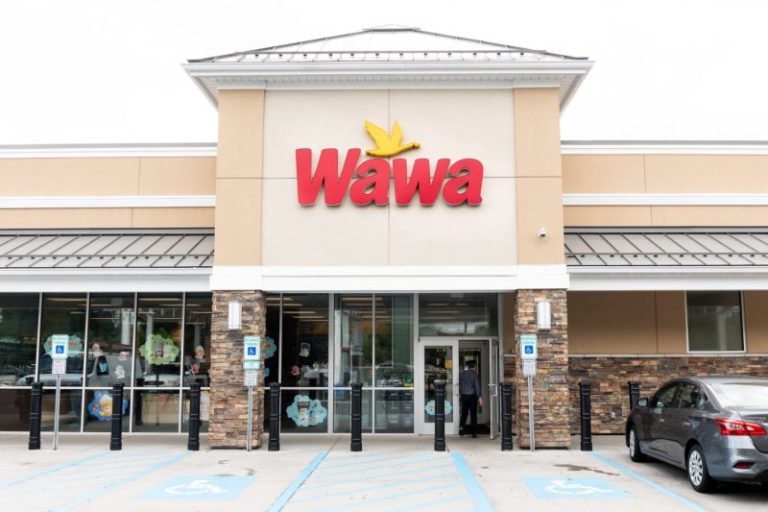(TheNewswire)
Vancouver, British Columbia TheNewswire – September 15th, 2025 Prismo Metals Inc. (the ‘ Company ‘ ) (CSE: PRIZ,OTC:PMOMF) (OTCQB: PMOMF) is pleased to report that its exploration team has identified porphyry style mineralization at its Silver King project located outside the town of Superior in Arizona. Given the proximity of the nearby Resolution Copper deposit (a joint venture between Rio Tinto and BHP), the team is excited about the potential of this same style of mineralization identified at surface within the eastern portion of our claim.
‘ This region is world-class for porphyry systems and base and precious metals, and we believe there is significant untapped potential. Our recent field work at the Silver King mine was successful in identifying several exploration targets apart from the historic silver mine deposit including polymetallic veins, manto replacements and a strongly altered intrusion with stockwork quartz-pyrite veining. Identifying this porphyry style mineralization on the claim block is a very positive development ,’ said Dr. Craig Gibson , Chief Exploration Officer.
Figure 1 . Map showing Silver King project and nearby mineral deposits.
The Silver King deposit is located three kilometers from the Resolution Copper deposit and the high-grade Magma mine, a former copper and silver producer, located 0.6 to 1.5 kilometers to the southwest Mineralization at Silver King is hosted by the same rock sequence that hosts those two deposits but is exposed at surface and is not covered by the thick sequence of unmineralized volcanic rocks that covers Resolution Copper. From 1911 to 1996 the Magma mine was developed on veins and replacement deposits in the Paleozoic and Precambrian strata and intrusive rocks, producing approximately 27.6 million short tons of ore averaging about 4.9% copper with important quantities of zinc, gold (689K oz) and silver (34.3M oz) (Briggs, 2015), eventually leading to the discovery of the nearby Resolution copper deposit (Fig. 1).
M ineralization similar to that at the Magma mine is exposed in several historic mine workings with abundant oxide copper minerals, mainly malachite, which were developed along a northeast dipping limestone horizon near the contact with a quartz diorite intrusion and quartzite along the same structural and stratigraphic trend of the Magma mine. The largest occurrence, at the Black Diamond mine in the eastern portion of the claim block, was developed on a large outcrop of abundant specular hematite and malachite replacing a limestone bed (Fig. 2) .
Additionally, an erosional window in a regional quartz diorite has exposed a felsic intrusion to the east of the Silver King workings that was identified in historical records and now confirmed by Prismo geologists. This felsic intrusion, previously described as a breccia pipe, is characterized by very strong stockwork quartz-pyrite veining in a quartz-sericite altered host rock. This target contains anomalous metal values in soil samples analyzed with the XRF. According to historical reports it has high salinity fluid inclusions typical of a porphyry system, providing evidence for porphyry mineralization on the Silver King claim package.
Figure 2 . Geologic and land map of the Silver King project showing newly described veins in magenta (Ag-Pb-Zn) and green (Cu-Ag) and replacement mineralization in red. The strongly altered intrusion with stock work quartz-pyrite veining is indicated by the crosshatch.
‘Much of the focus of the exploration program to date consisted of a property wide survey of historic mines and prospects surrounding the Silver King workings, ‘ said Gordon Aldcorn, President of Prismo .
‘ The exploration work has resulted in the identification of several mineralized occurrences on the property, including veins in the vicinity of the Silver King mine, and replacement and skarn mineralization in limestone units of the sedimentary sequence near the contact.’
Part of the initial exploration program consisted of a reconnaissance survey of the geology and mineral occurrences as well as a geochemical and alteration mineral survey around the surface expression of the Silver King deposit and a second separate target to the east.
The geochemical survey used a handheld XRF instrument to measure soil samples, and showed discrete anomalies for Cu, Ag, and Sb around the historic glory hole, with the copper geochemistry also associated with the ENE striking Cu bearing vein mentioned previously (Fig. 3). Twenty-nine samples have been submitted to the lab, with an additional fifteen samples from the Ripsey mine.
This initial phase of Prismo exploration on the Silver King project is already generating a better understanding of potential with new structures not fully uncovered in historical mining approaches. This work also helps qualify our upcoming drill program which is currently in the permitting stage and is anticipated to be advanced shortly.
Figure 3 . Soil geochemistry maps for Cu, Ag, and Sb from the Silver King mine. Contours are from values measured in soils by a handheld XRF in the field, with ranges for Cu at 5,619 ppm to 12.5 ppm, Ag at 186 ppm to 1.3 ppm, and Sb at 300 ppm to 3.9 ppm.
Click Image To View Full Size
As previously reported in Primo’s news release of August 28, 2025, the Company geologists identified two previously undescribed veins in the area surrounding the historic glory hole developed on the original exposure of high-grade silver at the Silver King deposit. Visual inspection and analysis with a handheld XRF show two distinct veins, one with abundant silver lead and zinc and the other with copper and silver values.
Figure 4 . Location of the Company’s projects within the Arizona Copper Belt
Qualified Person
Dr. Craig Gibson, PhD., CPG., a Qualified Person as defined by NI-43-01 regulations and Chief Exploration Officer and a director of the Company, has reviewed and approved the technical disclosures in this news release. The historic data presented in this press release was obtained from public sources, should be considered incomplete and is not qualified under NI 43-101, but is believed to be accurate. The Company has not verified the historical data presented and it cannot be relied upon, and it is being used solely to aid in exploration plans. References to mineralization at the Magma Mine and Resolution Copper deposit is not necessarily indicative of mineralization on the Silver King property.
-
(2) Briggs, D., 2015, Superior, Arizona: An old mining camp with many lives, Ariz. Geol Survey Contributed Report CR-15-D, 13p.
About the Silver King and Ripsey Mines
Discovered in 1875, the Silver King mine was one of Arizona’s most important historic producers, yielding nearly 6 million ounces of silver at grades of up to 61 oz/t. The Silver King mine sits only 3 km from the main shaft of the Resolution Copper project — a joint venture between Rio Tinto and BHP and one of the world’s largest unmined copper deposits with an estimated copper resource of 1.787 billion metric tonnes at an average grade of 1.5% copper (1) . The unique land position is fully surrounded by Resolution Copper’s claim block, offering strategic upside. Selected samples from small-scale production in the late 1990s returned grades as high as 644 oz/t silver (18,250 g/t) and 0.53 oz/t gold (15 g/t), indicating that high-grade mineralization remains.
The Ripsey mine is a historic gold-silver-copper producer located about 20 km west of the Hot Breccia project. Historic mine workings consisting of tunnels and shafts on several levels were developed along a vein over about 400 meters of strike length and 160 meters vertically. A small tonnage of mineral was produced by the Optionor in the late 1990’s. Limited sampling by Dr. Craig Gibson from the mine workings has yielded 15.9 g/t gold and 275 g/t silver over 0.75 meters and 8.7 g/t gold, 181 g/t silver, 3% copper and 9% zinc over 1 meter. No modern exploration has been carried out at the project, providing significant exploration upside and multiple drill targets.
About Prismo Metals Inc.
Prismo (CSE: PRIZ,OTC:PMOMF) is a mining exploration company focused on advancing its Silver King, Ripsey and Hot Breccia projects in Arizona and its Palos Verdes silver project in Mexico.
Please follow @PrismoMetals on , , , Instagram , and
Prismo Metals Inc.
1100 – 1111 Melville St., Vancouver, British Columbia V6E 3V6
Phone: (416) 361-0737
Contact:
Alain Lambert, Chief Executive Officer alain.lambert@prismometals.com
Gordon Aldcorn , President gordon.aldcorn@prismometals.com
Cautionary Note Regarding Forward-Looking Information
This release includes certain statements and information that may constitute forward-looking information within the meaning of applicable Canadian securities laws. Forward-looking statements relate to future events or future performance and reflect the expectations or beliefs of management of the Company regarding future events. Generally, forward-looking statements and information can be identified by the use of forward-looking terminology such as ‘ intends’ or ‘ anticipates ‘, or variations of such words and phrases or statements that certain actions, events or results ‘ may’, ‘ could’, ‘ should’, ‘ would’ or ‘ occur’. This information and these statements, referred to herein as ‘forward‐looking statements’, are not historical facts, are made as of the date of this news release and include without limitation, statements regarding discussions of future plans, estimates and forecasts and statements as to management’s expectations and intentions with respect to, among other things: the timing, costs and results of drilling at Hot Breccia.
These forward‐looking statements involve numerous risks and uncertainties, and actual results might differ materially from results suggested in any forward-looking statements. These risks and uncertainties include, among other things: delays in obtaining or failure to obtain appropriate funding to finance the exploration program at Silver King.
In making the forward-looking statements in this news release, the Company has applied several material assumptions, including without limitation, that: the ability to raise capital to fund the drilling campaign at Silver King and the timing of such drilling campaign.
Although management of the Company has attempted to identify important factors that could cause actual results to differ materially from those contained in forward-looking statements or forward-looking information, there may be other factors that cause results not to be as anticipated, estimated or intended. There can be no assurance that such statements will prove to be accurate, as actual results and future events could differ materially from those anticipated in such statements. Accordingly, readers should not place undue reliance on forward-looking statements and forward-looking information. Readers are cautioned that reliance on such information may not be appropriate for other purposes. The Company does not undertake to update any forward-looking statement, forward-looking information or financial outlook that are incorporated by reference herein, except in accordance with applicable securities laws. We seek safe harbor.
Copyright (c) 2025 TheNewswire – All rights reserved.
News Provided by TheNewsWire via QuoteMedia



